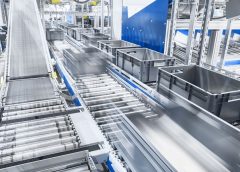Welding is an essential activity in the industrial sector. It involves joining different materials by heating them to their melting points and allowing them to cool, thus forming a strong and permanent bond. Over time, technology has evolved, and welding has become more sophisticated with various methods and techniques available.
One advancement in this field is welding simulation software, which provides a detailed and accurate representation of the welding process. Let’s look at the advantages of welding simulation in industrial applications.
Improved Productivity
Welding simulation reduces the time and costs associated with traditional methods that require multiple prototype iterations. With the ability to simulate a welding process beforehand, manufacturers can develop a more efficient methodology that saves valuable time and resources. This efficiency, in turn, leads to increased productivity and improved overall efficiency.
Enhanced Weld Quality
Welding simulation software provides a detailed and accurate representation of the welding process, enabling manufacturers to evaluate and optimize the weld parameters. This process helps identify potential issues like deformations, porosity, cracks, or other defects before welding. It also offers the ability to train and educate welding operators to identify, troubleshoot, and correct these problems to achieve a higher quality of welds.
Increased Safety
Welding is a complex and high-risk activity. The use of welding simulation software provides a safe and controlled environment for welders to train and improve their techniques. It minimizes the risks and hazards associated with traditional trial-and-error methods. By using a simulated environment, welding employees can acquire the necessary skills and experience to perform the job safely.
Cost Savings
Welding simulation software eliminates the need for multiple prototypes and trial-and-error methods, saving materials, equipment, setup, and labor costs. Additionally, accurate and optimized welding processes can reduce the need for costly welding mistakes and rework, thus reducing expenses and saving time.
Sustainability
Welding simulation software can contribute to sustainability by providing a digital solution that reduces the waste of materials, energy, and other resources. The software optimizes the welding process, enabling manufacturers to reduce their carbon footprint, lower material usage, and maximize resource efficiency.
Welding simulation software has increasingly become an essential tool for the industrial sector, providing a detailed and accurate representation of the welding process. Using this software is just one of the ways to reduce new welder training time and improve welding operations. With the advantages outlined above, it’s no surprise that welding simulation is rapidly becoming an industry standard.





